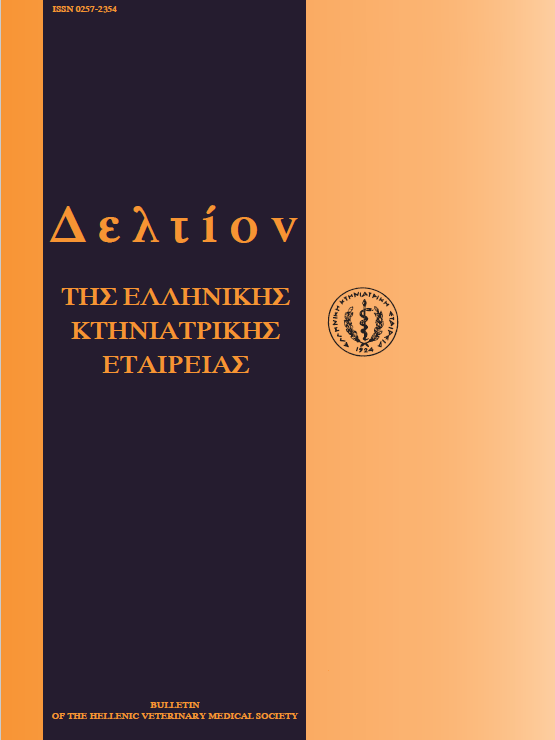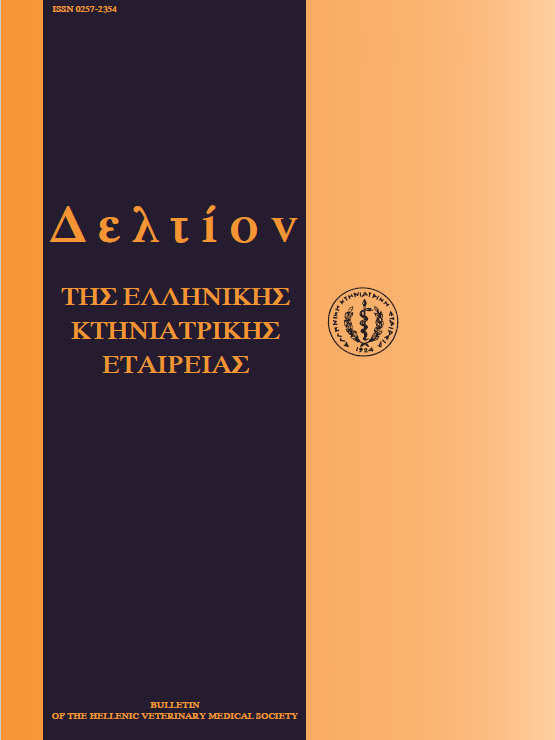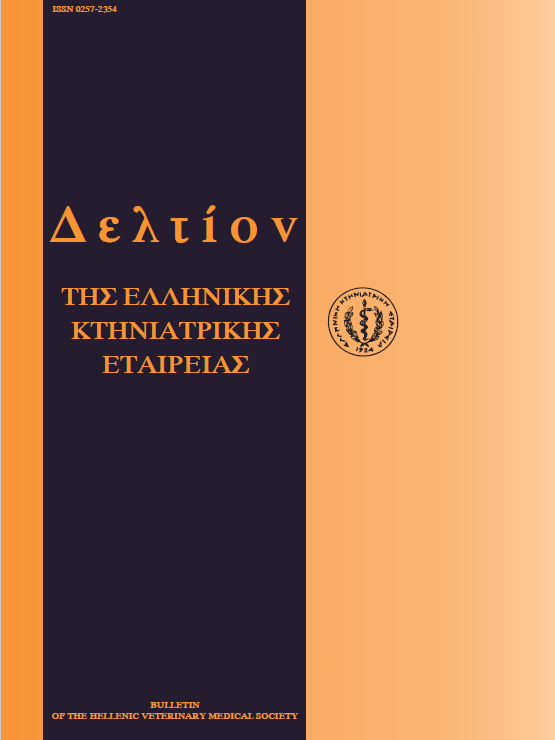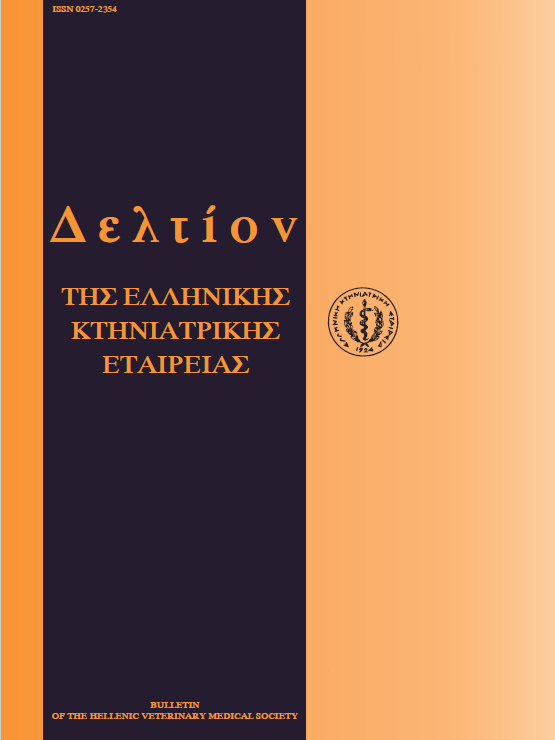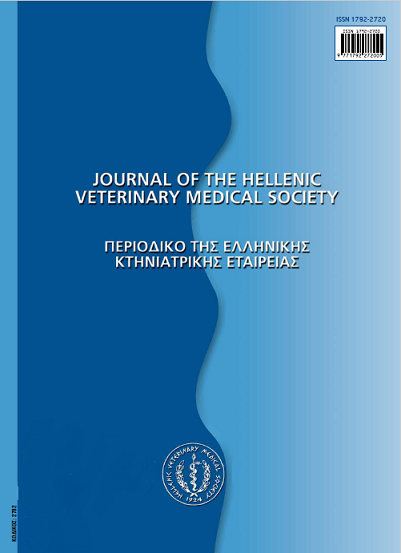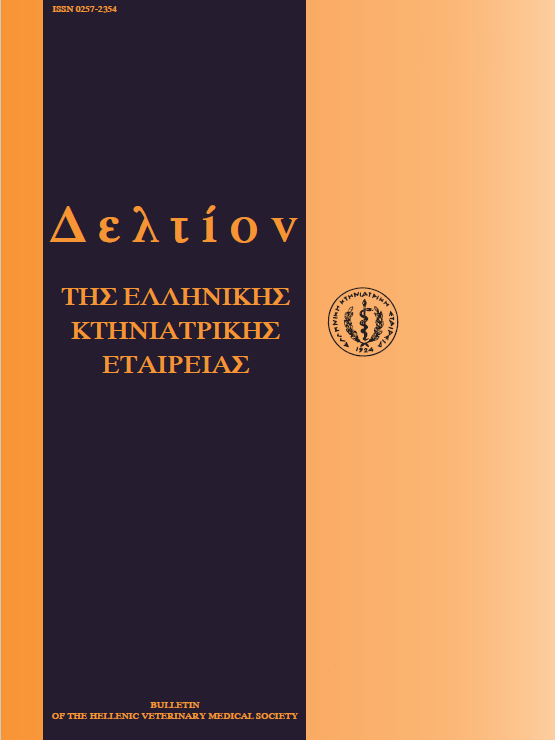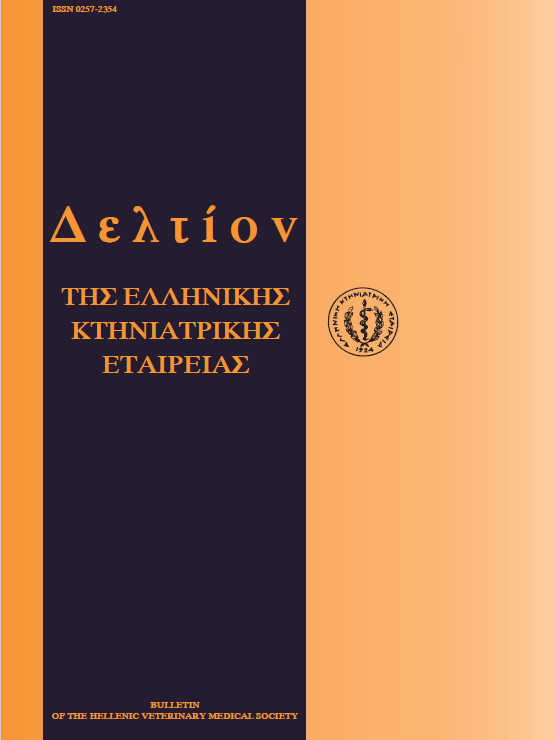Dipteran species in agricultural region of eastern Thessaloniki
Abstract
In an agricultural region of Thessaloniki province, fly traps were placed, which contained substances in order to attract flies with the purpose to trap and identify them. The substances were, pieces offish, meat and feta cheese, sugar and faeces of small ruminants. Fifteen different flies species were trapped, of which, thirteen are mentioned in the international bibliography, as parasites, such as, Musca domestica, Muscina sp, Fannia sp, Phormia regina, Lucilia (Phaenicia) sericata, Calliphora erythrocephala (vicina), Sarcophaga sp, Oestrus ovis, Gasterophillus sp, Stomoxys calcitrans, Haematobia (Shiphona) irritans, Chrysops sp and Hydrotaea (Ophyra) spp and two, as no parasites, such as Drosophilla melanogaster and Apis mellifera. From the trapped flies, Hydrotaea sp, Muscina sp, Fannia sp and Phormia regina, were identified for the first time in Greece. From the substances which were used in order to attract the flies, the fish was the one that all flies showed preference to, in the greater number, while the rest of the substances they chose descending order, was meat, sugar and feta cheese. Finally, only one fly was found in the excrement of small ruminants.
Article Details
- How to Cite
-
THEODORIDIS (Ι. ΘΕΟΔΩΡΙΔΗΣ) Y., GEORGOULAKIS (Ι. ΓΕΩΡΓΟΥΛΑΚΗΣ) I., & FOUNDA (Α. ΦΟΥΝΤΑ) A. (2018). Dipteran species in agricultural region of eastern Thessaloniki. Journal of the Hellenic Veterinary Medical Society, 50(1), 50–52. https://doi.org/10.12681/jhvms.15697
- Issue
- Vol. 50 No. 1 (1999)
- Section
- Research Articles

This work is licensed under a Creative Commons Attribution-NonCommercial 4.0 International License.
Authors who publish with this journal agree to the following terms:
· Authors retain copyright and grant the journal right of first publication with the work simultaneously licensed under a Creative Commons Attribution Non-Commercial License that allows others to share the work with an acknowledgement of the work's authorship and initial publication in this journal.
· Authors are able to enter into separate, additional contractual arrangements for the non-exclusive distribution of the journal's published version of the work (e.g. post it to an institutional repository or publish it in a book), with an acknowledgement of its initial publication in this journal.
· Authors are permitted and encouraged to post their work online (preferably in institutional repositories or on their website) prior to and during the submission process, as it can lead to productive exchanges, as well as earlier and greater citation of published work.

